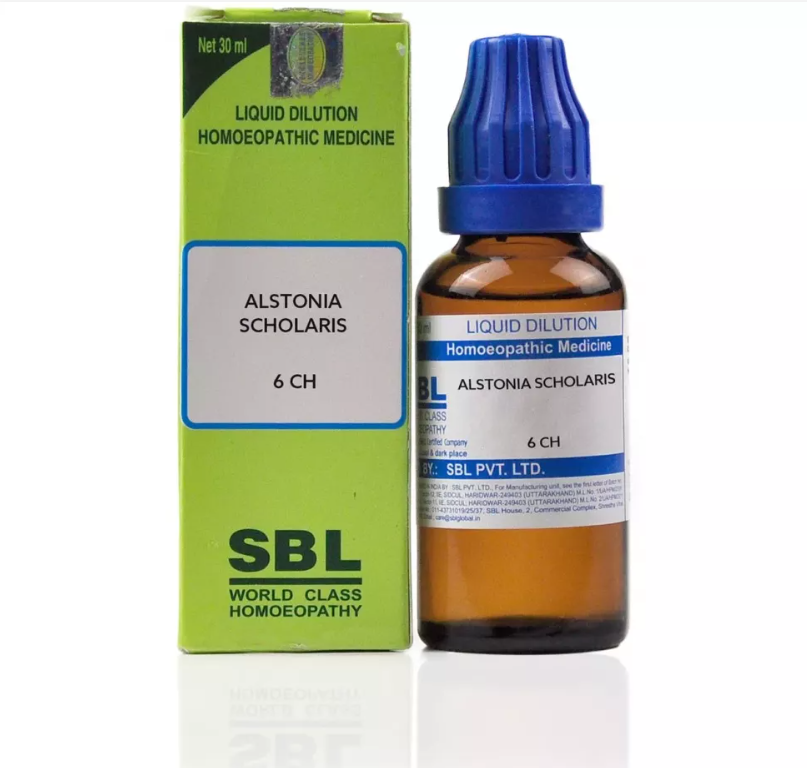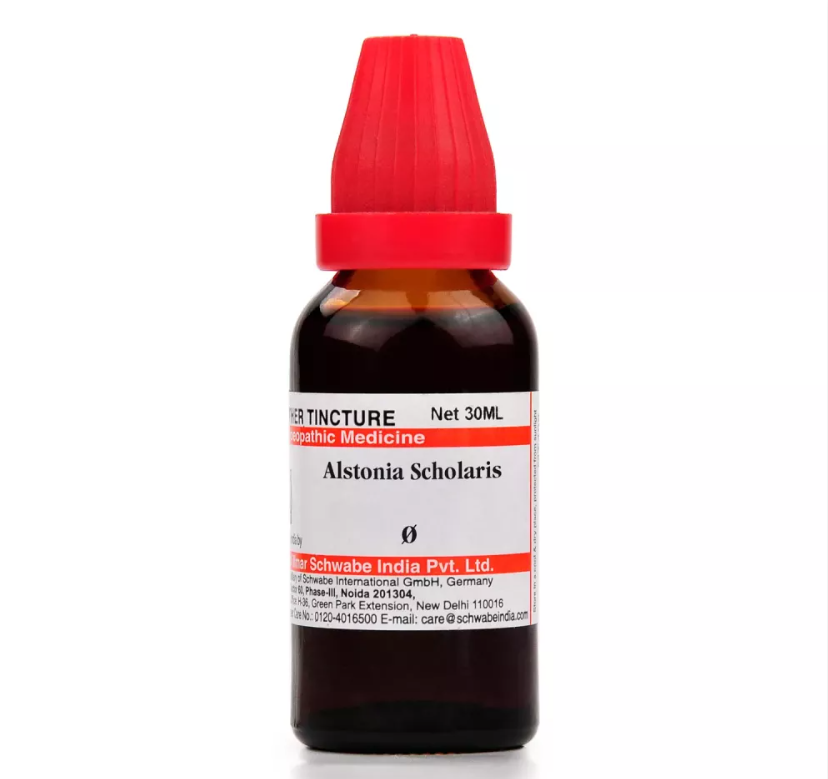Alstonia Scholaris Q, 6C, 12C, 30C, 200C, 1M, 10M USES AND SYMPTOMS
 Alstonia Scholaris
Alstonia Scholaris
(Dita Bark)
Malarial diseases accompanied by diarrhea, dysentery, anemia, and weak digestion. Common indications include a feeling of emptiness in the stomach, abdominal sinking, and overall weakness. It serves as a tonic after exhausting fevers.
In terms of abdominal issues, this remedy addresses violent purging and bowel cramps, as well as heat and irritation in the lower bowels. It proves beneficial for camp diarrhea caused by contaminated water during camps, bloody stool, dysentery, and diarrhea resulting from bad water and malaria. It is noteworthy for painless watery stools and diarrhea immediately after eating.
Alstonia Scholaris (Dita Bark) has a relationship with Alstonia constricta, the bitter bark or native quinine of Australia. Additionally, its active principle, Ditainum, acts as an anti-periodic similar to quinine but without unpleasant effects. It can be compared to Cinchona officinalis in terms of addressing diarrhea, chronic dyspepsia, and debility. Other relationships include Hydrastis, Ferrum citricum, and Chininum.
The recommended dose is the tincture up to the third potency. It can also be used locally for treating ulcers and relieving rheumatic pains.
SYMPTOMS OF Alstonia Scholaris
General Conditions:
- Malarial diseases
- Diarrhea
- Dysentery
- Anemia
- Feeble digestion
Characteristic Symptoms:
- All gone sensation in the stomach
- Sinking in the abdomen
- Debility
- Tonic recommended after exhausting fevers
Abdominal Symptoms:
- Violent purging and cramps in bowels
- Heat and irritation in lower bowels
- Camp diarrhea (diarrhea due to contaminated water, as during camps)
- Bloody stool
- Dysentery
- Diarrhea from bad water and malaria
- Painless watery stools (similar to Phosphoric acid)
- Diarrhea immediately after eating
Relationship:
- Similar in action to Alstonia constricta, the bitter bark or native quinine of Australia
- Ditainum (active principle, anti-periodic, like quinine, but without unpleasant effects)
- Cinchona officinalis (similar in diarrhea, chronic dyspepsia, and debility)
- Hydrastis, Ferrum citricum, and China (relationships with other remedies)
Dose:
- Tincture to third potency
- Locally, for ulcers and rheumatic pains
selection of the potency
Individualization:
- Homeopathy is based on the principle of treating the individual, not just the disease. The unique symptoms and characteristics of the person are crucial in determining the most suitable potency.
Intensity of Symptoms:
- The intensity of the symptoms guides the choice of potency. If the symptoms are intense and acute, a lower potency (e.g., 6C, 30C) might be considered. For chronic conditions with less intensity, higher potencies (e.g., 200C, 1M) may be appropriate.
Sensitivity of the Patient:
- Some individuals are more sensitive to homeopathic remedies, while others may require higher potencies. The practitioner considers the patient’s sensitivity when selecting the potency.
Acute vs. Chronic Conditions:
- Lower potencies are often used for acute conditions, while higher potencies may be considered for chronic or long-standing issues.
Previous Response to Potencies:
- The patient’s response to previous homeopathic treatments helps guide the choice of potency. If a particular potency has been effective in the past, it may be repeated or adjusted as needed.
Vital Force and Susceptibility:
- Homeopathy views illness as a disturbance in the vital force. The practitioner assesses the patient’s overall vitality and susceptibility to determine the appropriate potency.
Aggravation or Amelioration:
- The direction of the symptom response (aggravation or amelioration) after taking a remedy can influence the choice of potency.
Miasmatic Considerations:
- In classical homeopathy, the concept of miasms (inherited disease tendencies) is considered. The practitioner take this into account when selecting the potency.
Practitioner Experience:
- The experience and preference of the homeopathic practitioner play a role. Some practitioners may have success with certain potencies based on their clinical experience.
SAFETY INFORMATION
- Do not exceed the recommended dose by physician
- Keep out of the reach of children
- Store in a cool dry place away from direct sunlight
- Maintain half an hour gap between food/drink/any other medicines and homoeopathic medicine
- Avoid any strong smell in the mouth while taking medicine e.g. camphor, garlic, onion, coffee, hing
Medicine images use for reference only selection of homeopathic medicine depends on the individual’s specific symptoms and overall constitution. Moreover, homeopathy is a holistic system of medicine that treats the individual as a whole. In addition to addressing the physical symptoms, it takes into account the emotional and mental state of the person. Consequently, it’s crucial to consult with a qualified homeopathic practitioner for personalized treatment.
The information provided on this website is intended solely for educational purposes. Always seek the advice of your physician or other qualified health provider.
